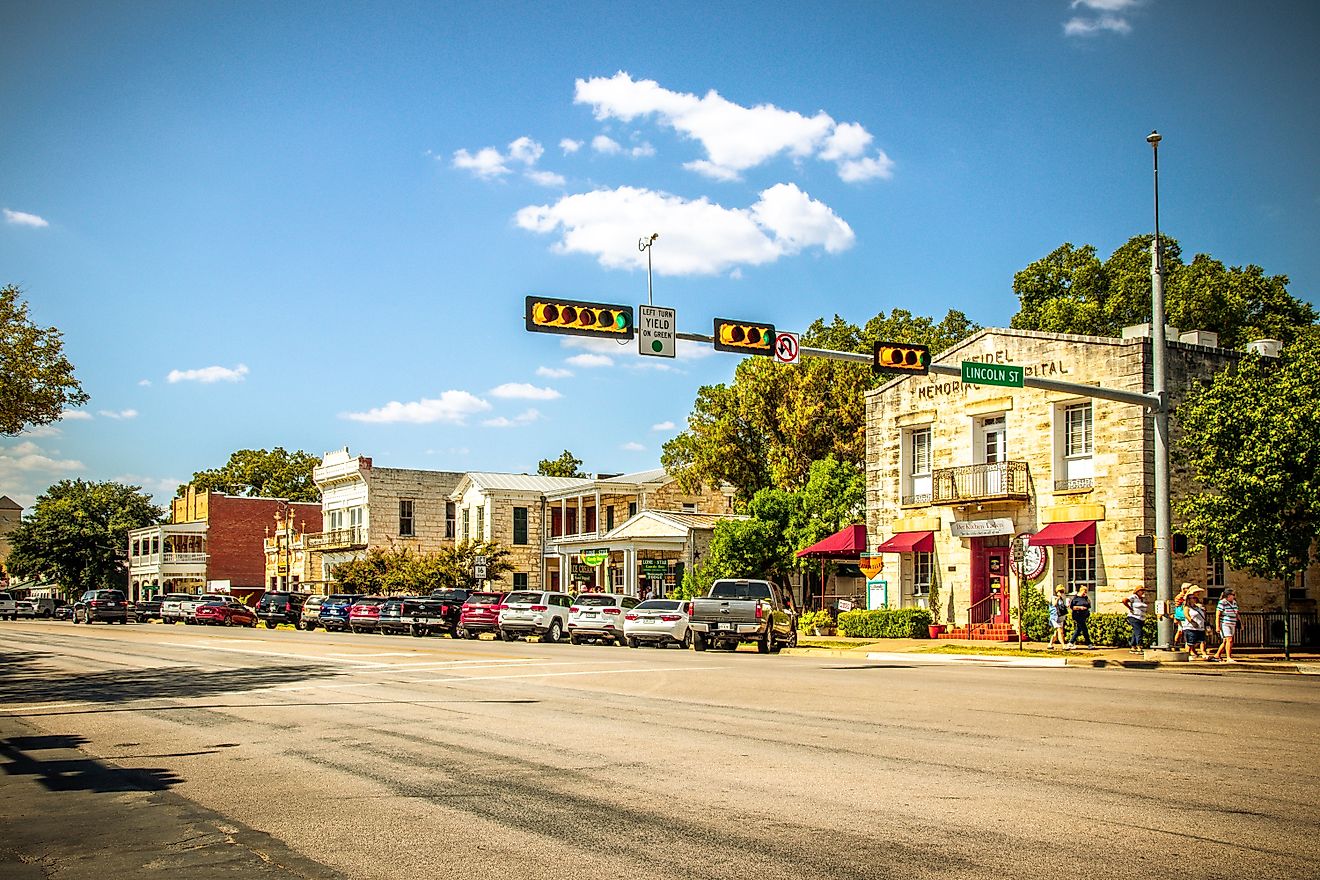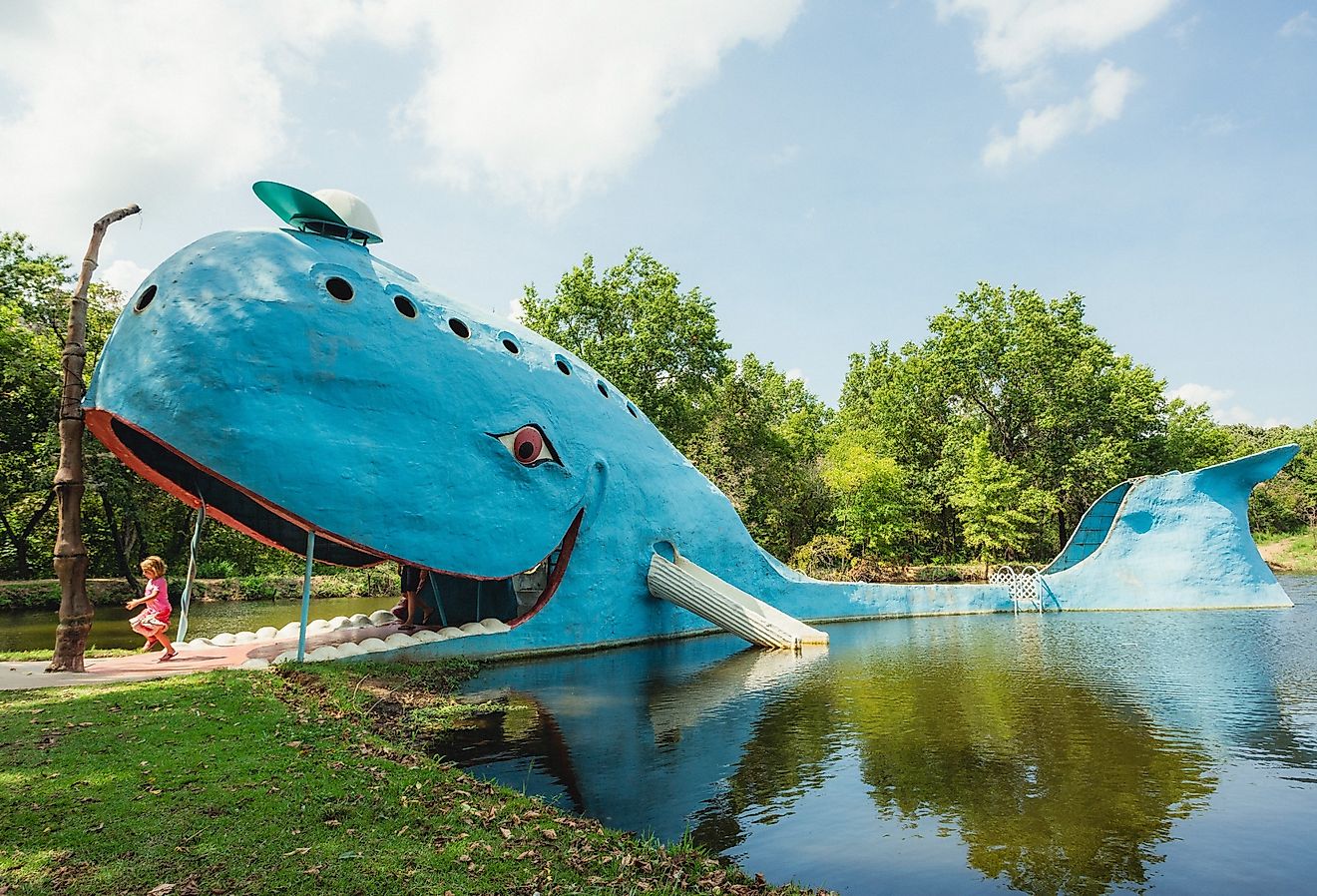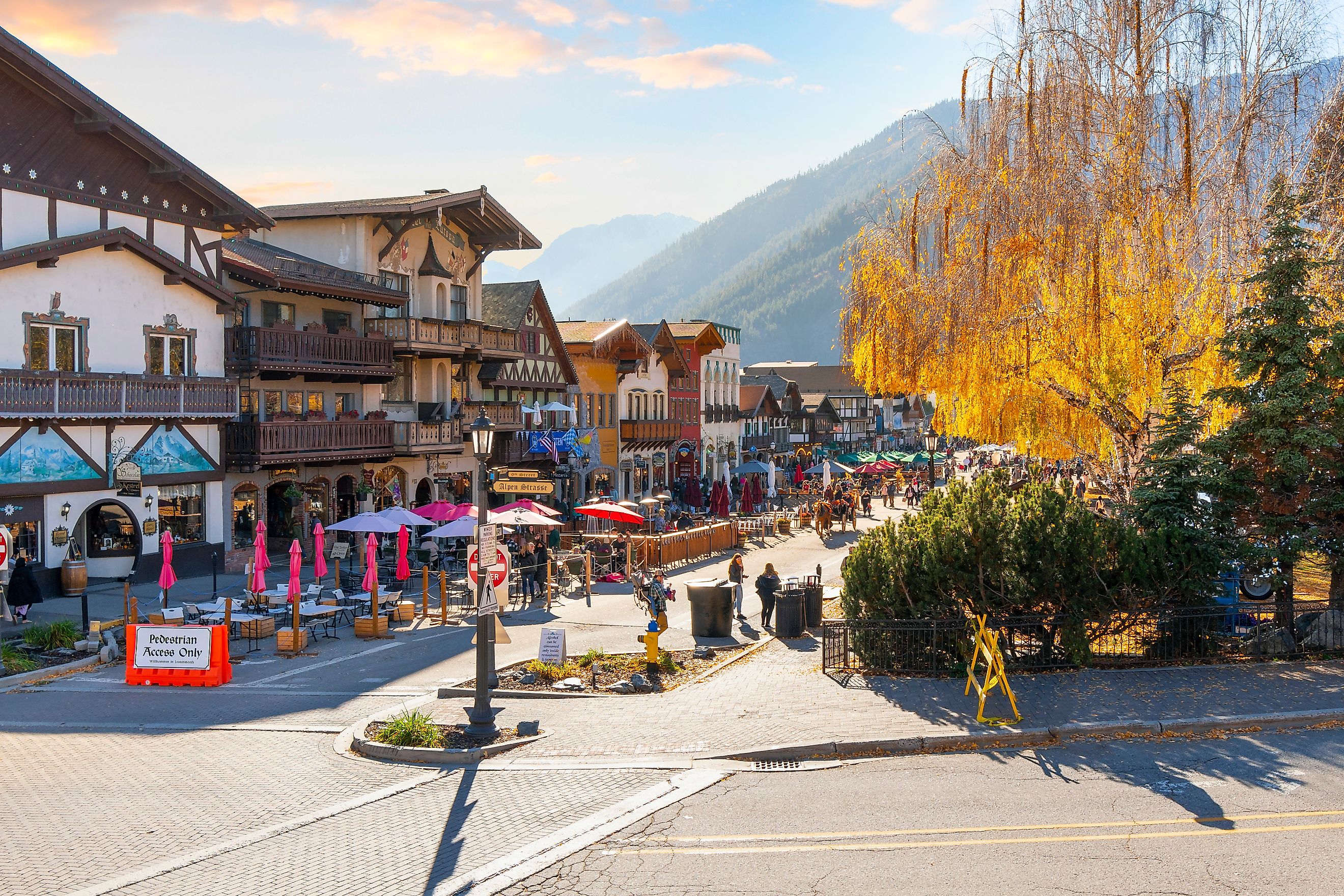
8 Breathtaking Towns To Visit In Washington
Washington State, in the Pacific Northwest, is characterized by its natural diversity, ranging from the arid deserts of the Columbia Plateau to the temperate rainforests of the Olympic Peninsula. The Pacific Ocean borders it to the west. The state's varied climate zones influence its agricultural output, which includes leading the nation in apple production. Washington has many breathtakingly beautiful small towns amongst these geographical features. These eight are ranked as the most worth visiting.
Leavenworth
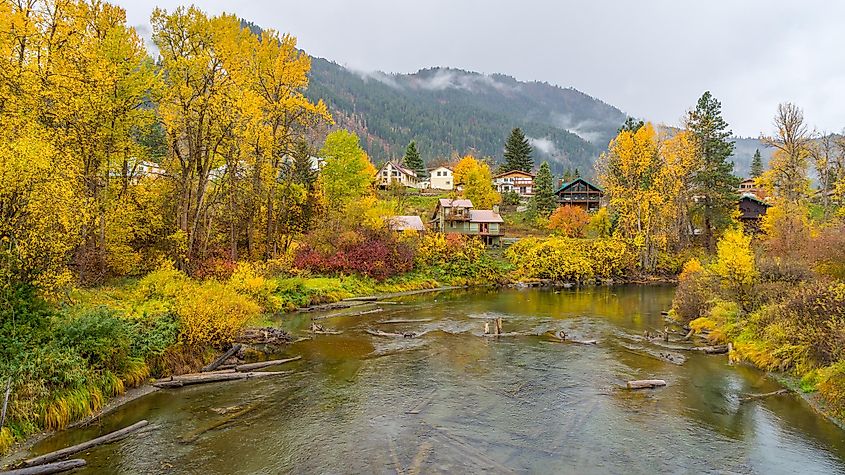
Leavenworth, Washington, is a themed town in the Cascade Mountains. Originally developed as a logging and railroad community in the early 20th century, Leavenworth transformed its identity in the 1960s to revive its struggling economy. Local leaders remodeled the town's architecture to resemble a Bavarian village to attract tourists.
Icicle Creek is a prime destination for nature lovers. In the warmer months, visitors can hike, fish, and camp along its banks, while winter is for snowshoeing and ice climbing. The Leavenworth Reindeer Farm is a family-friendly experience where guests can interact with reindeer and learn about their habitat and care. The Leavenworth Nutcracker Museum displays a collection of nutcrackers, dating from prehistoric to modern times. The museum, which features over 7,000 pieces, explores the evolution of the nutcracker and the cultural history of this tool and toy.
Gig Harbor
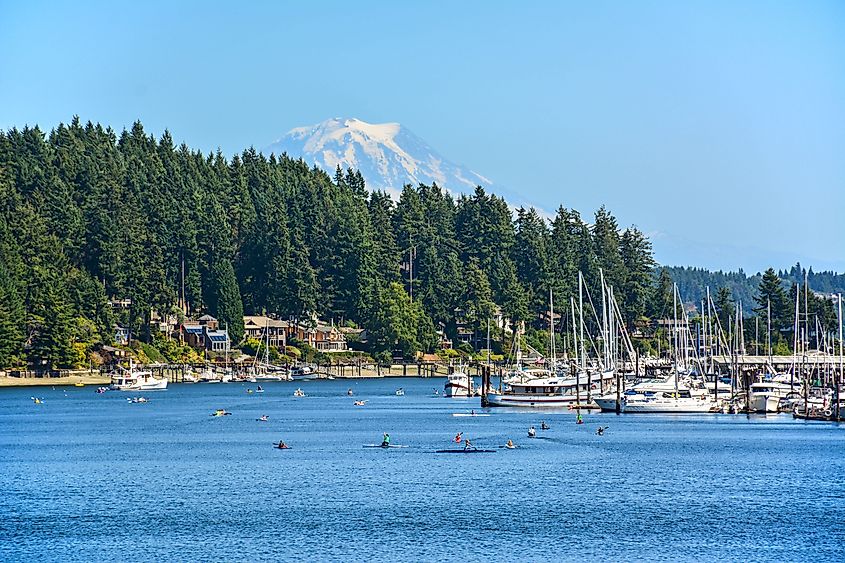
Gig Harbor is a maritime town at the south end of Puget Sound. The town was originally inhabited by the Squaxin Island and Puyallup Native American tribes before European settlers, predominantly fishermen from Croatia and Scandinavia, established a community in the late 19th century. Gig Harbor's name reportedly originated when a crew navigating a small gig (a type of boat) sought refuge in the harbor during a storm.
The Harbor History Museum is a great starting point. It details the town's local history, from Native American culture to the European settlers and the evolution of the fishing industry. Kopachuck State Park, located just outside the town, is home to dense forests, a sandy beach, and ample opportunities for hiking, picnicking, and watersports. Meanwhile, Skansie Brothers Park and Netshed is a waterfront setting right in the center of downtown. The park includes the historic Skansie Netshed, once used by local fishermen, and now serves as a public space that hosts frequent community events.
Anacortes
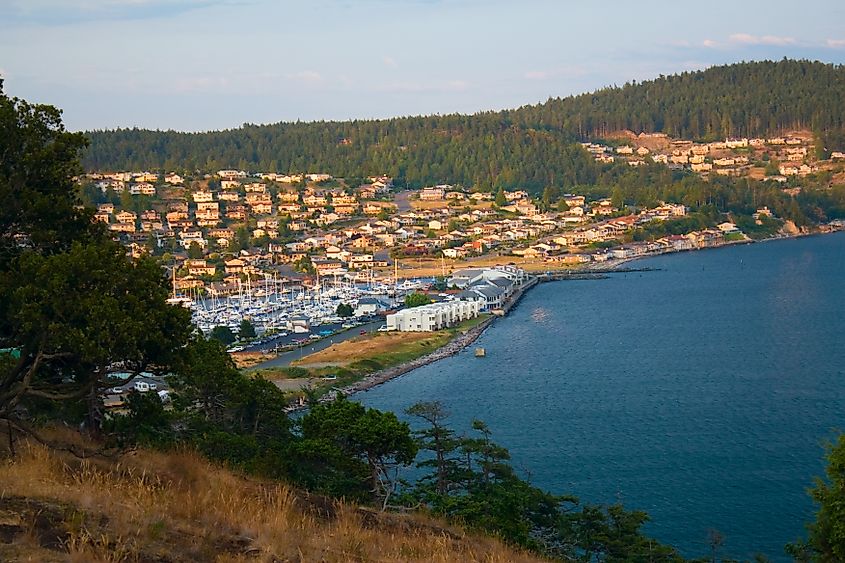
Anacortes, Washington, is on Fidalgo Island in the Puget Sound region. Accessible by bridge from the mainland, Anacortes is famed for its gateway status to the San Juan Islands and Victoria, B.C., thanks to its ferry connections. Originally inhabited by the Samish and Swinomish tribes, the town was established in the late 19th century by Amos Bowman, whose aspirations for the town included becoming the terminus of the Northern Pacific Railroad. This dream never materialized.
Washington Park, located on the western tip of Fidalgo Island, spans 220 acres and has a loop road that caters to both vehicles and pedestrians. There are various viewpoints to observe the San Juan Islands and the Olympic Mountains. Mount Erie is a more challenging adventure, standing as the highest point on Fidalgo Island. Accessible by car or via hiking trails, the summit has breathtaking 360-degree views of the surrounding Puget Sound waters and multiple islands. Cap Sante Park, another notable point, overlooks the Anacortes marina and the town. It is a spot for photographers and casual hikers.
Walla Walla
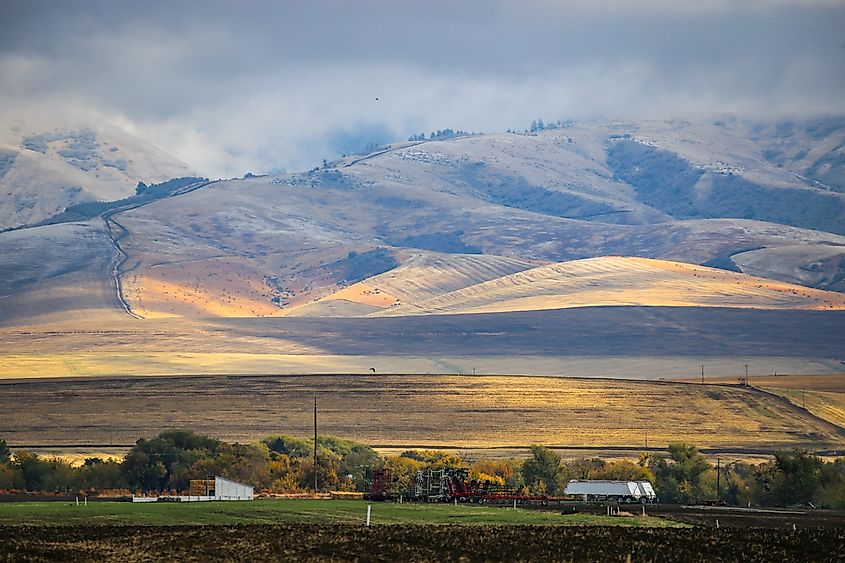
Walla Walla is in the southeastern part of the state and has agricultural land, particularly for wheat and sweet onions. The area was originally inhabited by the Walla Walla tribe, with the name meaning "Place of Many Waters," reflective of the numerous streams that converge in the valley. Walla Walla developed significantly with the establishment of the Whitman Mission in 1836 by Marcus Whitman until the tragic Whitman Massacre in 1847.
The Fort Walla Walla Museum's campus includes restored pioneer-era buildings and live historical reenactments of local historical events. Whitman Mission National Historic Site is an important site in both local and national history, where visitors can learn about the lives of the Whitmans, the mission’s impact on the Oregon Trail, and the conflict with the local tribes that led to the massacre. Lastly, Pioneer Park Aviary located in Walla Walla’s oldest park, is an experience not to be missed. Visitors can see and learn about various bird species in an open-air setting.
Langley
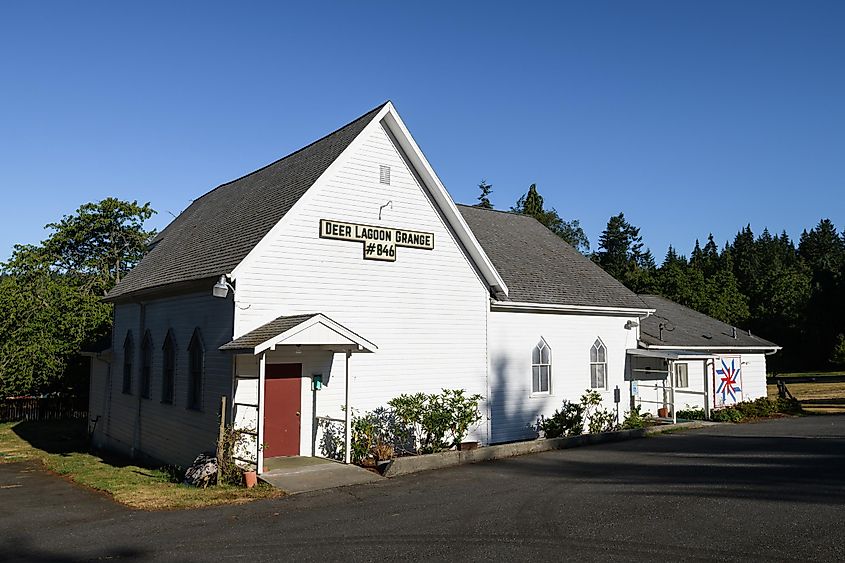
Langley, Washington, nestled on Whidbey Island, is a seaside village on the Pacific Ocean. Founded in the early 1900s and incorporated in 1913, Langley overlooks the Saratoga Passage and is often called "The Village by the Sea." This quaint town was originally an area of logging and fishing, with its economy and culture deeply intertwined with the island's natural resources. Over the years, Langley has become a destination for artists, writers, and performers, drawn by its tranquil environment.
The Whidbey Island Center for the Arts hosts performances, art exhibitions, and educational programs. It is a focal point for the arts in the community, highlighting local and regional talent. Saratoga Woods Preserve has well-maintained trails through forests and meadows, ideal for hiking and bird watching. Callahan’s Firehouse Studio and Gallery, set in a converted early 20th-century firehouse, lets visitors view and purchase glass art and participate in glassblowing lessons. A local artist runs the studio.
Chelan
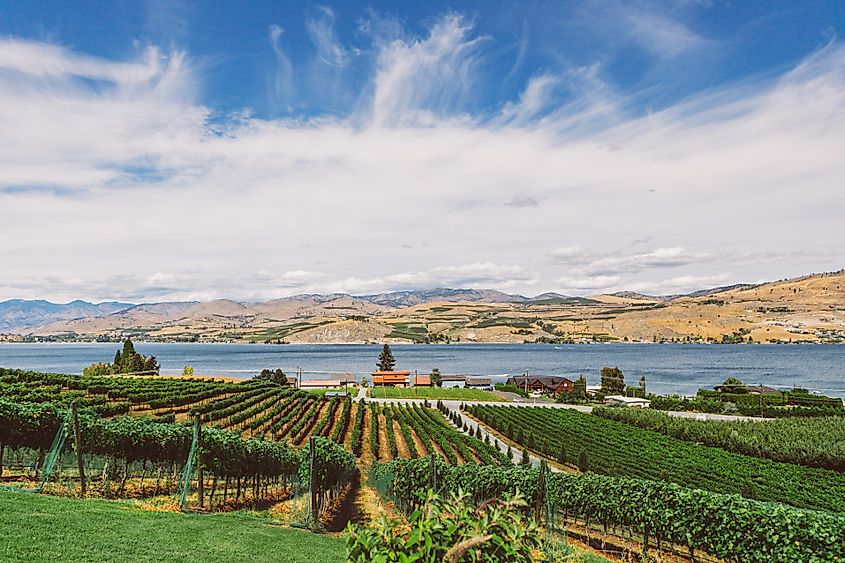
Chelan, Washington, is in the North Cascades region and sits at the southeastern tip of Lake Chelan, one of the deepest lakes in the United States. The name "Chelan" derives from the Salish indigenous word "Tsi - Laan," meaning deep water. Historically, the region was first inhabited by the Chelan Native American tribe, who utilized the lake and surrounding areas for fishing and seasonal settlements. In the late 19th century, European settlers were drawn to the area for agriculture and mining.
The Lake Chelan National Recreation Area is for outdoor recreation, including boating, hiking, camping, and fishing. The waters of the lake and the surrounding mountainous landscape provide scenic views. Chelan Riverwalk Park is a one-mile loop along the Chelan River, with bridges, picnic areas, and public art installations. It's an ideal spot for a stroll. Tsillan Cellars lets visitors taste the local viticulture, with its Italian-inspired architecture and panoramic views of Lake Chelan. Visitors can also enjoy fine dining at the winery's restaurant, which has a seasonal menu.
Sequim
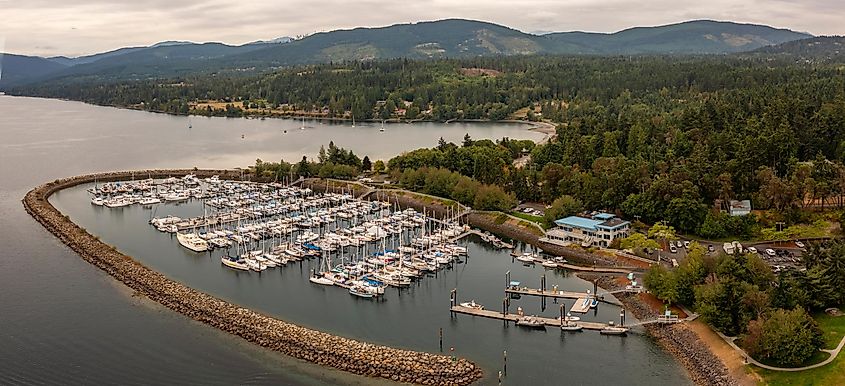
Sequim, Washington, located on the Olympic Peninsula, has a microclimate that results in far less rainfall than typical for the Pacific Northwest, thanks to the rain shadow effect of the Olympic Mountains. This characteristic has earned Sequim the nickname "the Blue Hole." European settlers began farming the area in the 1850s. The region's fertile land led to its recognition as an ideal place for growing lavender, and today, Sequim is known as the "Lavender Capital of North America."
The Dungeness National Wildlife Refuge is a must-visit, famous for its 5.5-mile-long spit, the longest natural sand spit in the United States, which culminates at the historic Dungeness Lighthouse. The refuge is home to over 250 species of birds, 41 species of land mammals, and eight species of marine mammals. Among the numerous lavender farms, Purple Haze Lavender Farm stands out. Visitors can wander through aromatic fields of lavender, partake in u-pick events, and purchase lavender-based products. Railroad Bridge Park provides another outdoor experience, where the historic Railroad Bridge stands over the Dungeness River.
Edmonds
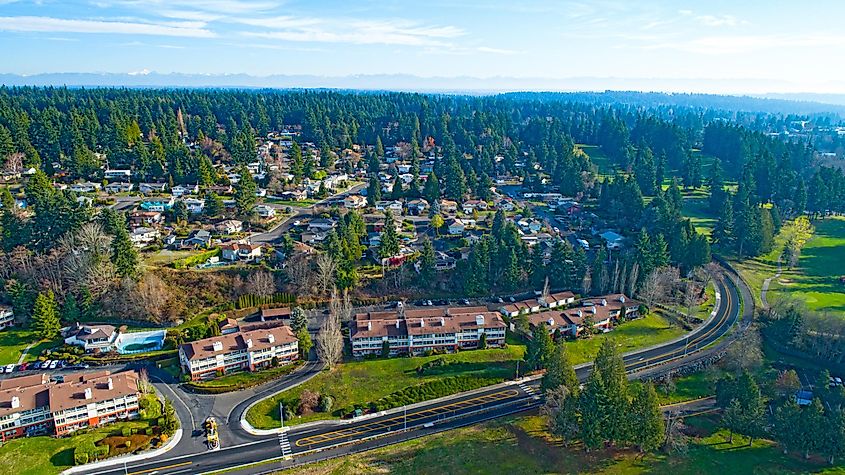
Edmonds, Washington, is a town located along the shores of Puget Sound. Founded by logger George Brackett in 1876, Edmonds grew from a humble logging camp into a thriving small town, officially incorporated in 1890. Its waterfront location made it a key player in the timber and shingle industry during the late 19th and early 20th centuries.
Edmonds Marsh is one of the few urban saltwater estuaries left in the Puget Sound area. The marsh is a critical habitat for wildlife and has boardwalks and viewing platforms for visitors to observe the area's natural ecosystem. Brackett's Landing North is a waterfront park located next to the Edmonds ferry terminal. It has beach access, picnic areas, and underwater dive parks, making it a hotspot for scuba diving. Edmonds Museum, located in the Carnegie Library building, delves into local history with exhibits that change seasonally. The museum also hosts a summer market.
Washington State's small towns exude breathtaking natural beauty but are also reservoirs of history and culture. Leavenworth, with its unique Bavarian theme set against the Cascade Mountains, has a distinct European charm. Gig Harbor has a maritime heritage that is both rich and educational, perfect for those intrigued by Washington's nautical past. Further, Anacortes is a scenic portal to the San Juan Islands. These towns, among others, exemplify the breathtakingly beautiful and diverse offerings of Washington, making them prime Pacific Northwest settings.




